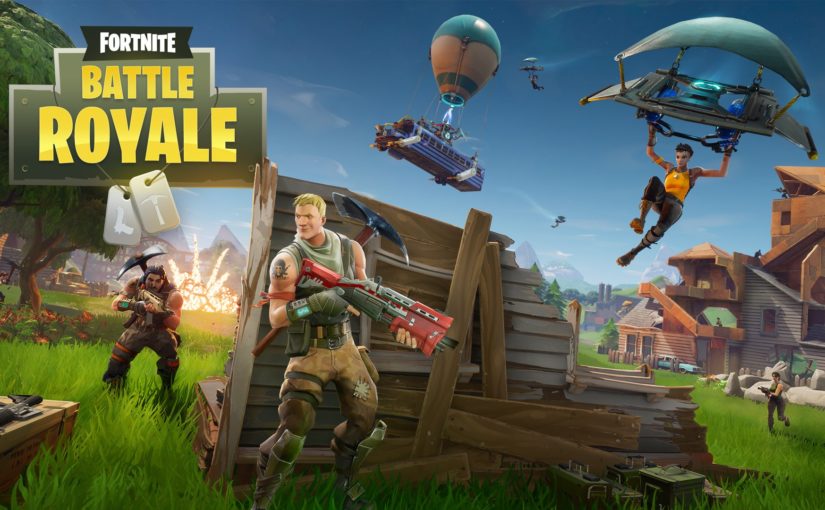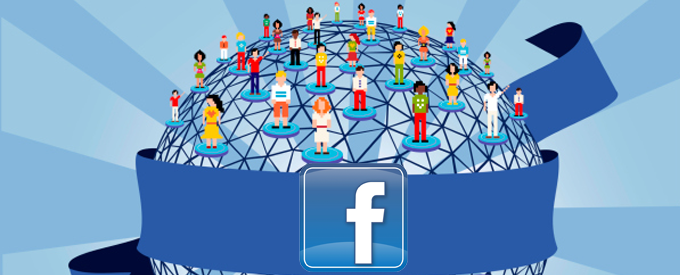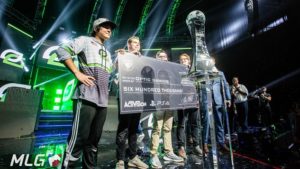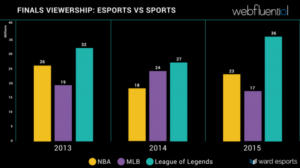Social Networks: Public Relations and Twitter Communities
Keely Duffield
Curtin University
Abstract
This paper explores the notion that Twitter as a microblogging social network is an efficient tool for Public Relations (PR) professionals to build long-lasting relationships with networked communities. It presents the advantages of social networks include a decrease in geographical locations and spatial boundaries, while also having the ability to send 140-character messages to mass users among various multimedia platforms. The paper argues these affordances with the support of examples to demonstrate why this is efficient for PR professionals when building strong relationships in the Twitter community. To support the argument, a case study examining the American Red Cross as an organisation that regularly users Twitter to build relationships with publics will also be included. The paper also evaluates the limitations of communicating with communities online and whether this outweighs offline face-to-face communication with communities. Ultimately, the evaluation of limitations comes to the conclusion that PR professionals need the efficiency of online social networks to engage with communities as well as the traditional meaningfulness of face-to-face communication, this demonstrating the blurred boundaries between online and offline communities.
Key Words: social networks, virtual communities, Public Relations, Twitter
Introduction
Social networking has created a platform for communities online to communicate in new ways that compresses the boundaries of time and space. Online social networking platforms such as Twitter have become an efficient resource for Public Relations professionals to build long-meaningful relationships with networked communities. While offline communications are valuable in Public Relations, social networking has decreased the barriers of time and space allowing professionals to use communication strategies within the Twitter community that aren’t available offline. The Twitter community facilitates efficient communication strategies that gives PR a number of advantages in building relationships with networked publics. These advantages include a larger community in terms of geographical locations broadened, the control of time online, and using multimedia platforms and word-of-mouth to reach a wider community. A case study conducted by the American Red Cross demonstrates how each of these advantages assist PR professionals when building relationships with the Twitter community. However, it could also be argued that there are limitations when communicating through social networks in contrast to building meaningful relationships with communities offline. When evaluating both the advantages and limitations in engaging communities online, it’s imperative to understand that both social networking communities online and offline communities present different forms of communication that are essential in building professional relationships. These types of communication demonstrate that there are blurred lines between online and offline networks.
The platform Twitter organises its own communities through networks of individuals linked together sharing information, ideas, and desires. Calhoun (2002) defined virtual communities “large groups of individuals who may be linked together to share information, ideas, feelings, and desires” whilst being independent of geospatial location (as cited in Katz et al. 2004, 325). The virtual community sees the physical community as potentially repressive, as it ignores despatialised interests. Instead, virtual communities attempt to break through some of the boundaries of race, gender, ethnicity, and geographic location established in physical communities (Katz et al. 2004, 326). Although physical communities contrast with virtual communities through face-to-face communication and communication within technology, both forms of the community become blurred as they share specific characteristics such as intimacy ties, information-driven, and high social influence of human action (Baym et al. 2007, p.736). These characteristics are recognisable Twitter as intimacy ties and information-driven content are formed through conversations of shared thoughts and feelings, while high social influence of human action is the continuous connection of tweets and re-tweets that circulate throughout the twitter community. The idea that virtual networked communities on Twitter can present comparative strong ties to physical communities can be argued in the role of PR influence within Twitter communities. An example of this can be presidential campaign elections conducted through Twitter. In 2016 Donald Trump reasoned that 28 million followers across various social media platforms helped him win the presidential election against Hillary Clinton (McCormick, 2016).
Advantages of the Twitter Community and online communication
To use social media in PR campaigns such as a presidential election allows PR professionals to input influential tactics such as geographic location, timeliness, and multimedia messages to the masses in order to build communities and followers online. Kats et al. (2014) argue that virtual communities differentiate from physical communities by the independence of geographical location. Digital media encourages globalisation as social networks have the ability to create online communities by allowing individuals to contact strangers from another location out of close vicinity. When individuals communicate with distant ties they use “space-transcending affordances” of social media networking that wouldn’t be made possible offline (Boase 2008, p. 493). These affordances include communicating with other online users asynchronously and instantaneously (Jensan et al. 2009 p. 2170). As the Internet decreases the barriers of geographical locations, social networking communities such as the Twitter community gain a greater understanding of cultural and religious variations. In doing so this creates smaller, more exclusive communities within the larger Twitter network. A smaller community of different interest and desires allows PR professionals to target a wider or specific range of publics for communication strategies. These communities can identify in the example of #kony2012, a campaign in which presented a dictator who kidnapped children to become child soldiers for a suspected civil war in Africa. The campaign as it is now known as a hoax but during this period built a large following from all over the world and managed to influence these online communities enough to send money the campaign protesting against Kony (Sichynsky 2016). This campaign demonstrates by decreasing geographic locations online is a major factor as to how PR professionals have the ability to use cultural differences to build relationships with communities online.
Traditionally to communicate offline, communities would use face-to-face contact, this communication for would only occur on occasion or weekly. However, due to the affordances of the Internet communities on Twitter have the ability to communicate instantly and asynchronously. Timeliness online allows PR professionals to not only post updates to the Twitter community regularly but also respond to a crisis in a timely manner, thus reducing the damage of losing stakeholder relationships. Timeliness on Twitter allows the public to respond to a crisis around the world in real time. In recent events that occurred, Steve Smith (Australia’s cricket captain) had been found guilty for a ball-tampering scandal in a recent test match. Smith’s apology statement at the press conference led to thousands of fans writing their sympathies for the Australian captain on Twitter (“Twitter reactions to Steve Smith,” 2018). Taking action quickly as an organisation can lead to responses from the Twitter community within a matter of minutes. In Smith’s case, the community’s mass responses have the potential to change the opinions of the rest of the public.
Virtual communities are not limited to one social media platform in which they communicate. Often communities that are formed offline use social networking sites as an affordance for communicating. Not only has social media allowed communities to communicate but to communicate on various platforms that are suited appropriately for the audience viewing the content; platforms include Linkedin to network business associates, Twitter for news, and Facebook for social (Saffer, Sommerfeldt, & Taylor 2013). Social media networks often have an algorithm that allows user accounts on platforms to connect with other social media platforms. This contributes to building larger communities online. Twitter as microblogging network meant that individuals that posted regularly and who followed over 100 accounts, would often expect to have more followers in return. This shows that what an individual posted online a mass sum of followers could like and retweet creating more attention to content created (Boyd 2006). Hashtags are an effective tool for PR professionals to link a particular interest or idea across a networking platform. Using hashtags on Twitter creates awareness around a topic by clicking the link it leads to a page on that particular platform presenting all post that uses the linked hashtag (Su et al. 2017, p.576). Using hashtags on Twitter generates conversation within the online community, especially activist hashtags and tweets. A popular example is the hashtag #blacklivesmatter which was tweeted over twelve million times (Sichynsky 2016), this changing a large percentage of Twitter to create a unified online community. Twitters social networking tools can build and maintain relationships between institutions and online communities through the use of tweets, hashtags, and hyperlinks (Su et al. 2017, p.576). By using Twitters social networking tools, it allows PR professionals to connect with other social media platforms, therefore becoming effective in creating larger communities within social networks to build stronger relationships.
When evaluating a company and consumer relationship, it is recognisable there is often a lack of trust coming from the consumers’ perception of the company. Twitter’s way of crafting short messages to reach the masses asynchronously and instantaneously has only enhanced the opportunity for PR professionals to build stronger relationships with the Twitter community. Twitter has made it simple for PR professionals to ensure trust with its publics through online conversations via word-of-mouth. Richins and Root-Shaffer (1988) defined word-of-mouth as the process whereby information is transferred from person to person, contributing to customers buying decisions (as cited in Janson et al., 2009). By understanding Twitter’s casualness an organisation can tweet to its community and if the message is positive the masses will continue to re-tweet and tweet positive reviews about organisation, hence building greater trust between consumer and company. In a research study conducted by Jansen et al. (2009, p.2177) the results showed that 60% of tweets for brands were positive and just over 22% of tweets were negative. The research also found that while there was more positive brand word-of-mouth circulating Twitter, prior research literature formulated that negative tweets have greater significance. The research conducted demonstrates that when businesses use microblogging websites it creates a space to allow two-way symmetrical communication between companies and consumers. Therefore, this allows the Twitter community to have more trust in companies by using word-of-mouth is gives the community an input in brands. This efficient PR tactic, therefore, creates a more positive, balanced relationship between Businesses and online communities.
Case Study: American Red Cross Organisation
Briones et al. (2011) conducted a case study survey, interviewing 40 participants from the American Red Cross organisation in order to examine the usefulness of social networking sites for PR communication strategies. The literature review for the research explains that not-for-profit organisations greatly benefit from social media not only because it strengthens relationships between the organisation and the community but also it allows virtual communities to have more input and collaboration within the community. The survey results showed that two-way communication dialogue developed between the Red Cross and the younger Twitter community has proven to be a valuable communication strategy for building long-lasting relationships between the organisation and its publics. The results support the idea that virtual communities on social networks appreciate two-way dialogues many of the participants stated that social media allows them to “be a part of the conversation” (Briones et al 2011, p.38). Su et al. (2014, p.573) argued that the two-way model is relevant to social media practices as they are dialogue based. In the findings, it was also notable that many participants found Twitter and Facebook were the best social media tools for building stronger relationships with the community. One participant stated, “It’s actually better, we get more response from our postings on Facebook and Twitter than our more traditional” (as cited in Briones et al. 2011 p.39).
When examining the American Red Cross case study, it can be identified that the encouragement of using Twitter to build stronger relationships was fuelled by positive reactions toward two-way communication. The success of the American Red Cross relationship with the Twitter community relies on the affordances that the Internet provides. It allows the ability to send a message instantaneously and asynchronously to another user that isn’t in the same geographic location. Not only this but social networking has the affordance to send a message to mass audiences using hashtags to get messages across to multimedia platforms during times of crisis. These affordances of social networking are the reasons the Red Cross has the capability of building strong relationships with communities online and offline.
Limitations of online communication strategies in communities
While PR still currently uses traditional media and face-to-face as a means of communication with stakeholders, social media is now an effective tool used for communicating with public on a more regular basis. The one-way communication model limited communities to engage with organisational branding. However, there are theorists such as Cummings et al. (2000) and Albrecht & Adelman (1987) that would argue that traditional media and face-to-face communication with stakeholders encourage more meaningful relationships (as cited in Baym 2007, p. 737). The limitations of social networking with communities online can be difficult to have control over conversations and responses. It can also lead to information being lost or becoming misinterpreted by the mass audience. However, it could be argued that using PR strategies offline has proven to be equally important as using them online. As Web 2.0 becomes embedded in everyday lives, it’s rare to find a community offline that doesn’t use social networks as a tool for interaction. Gruzd, Wellman, and Takheyev (2011) argued the idea that personal networks are still more robust than online social networking, however, each form of communication can enhance the other. The theorists state, “For years, social scientists have responded by systematically showing that almost all people who interact communally online also see each other in person. They have found that the Internet and in-person contact extend and enhance each other, rather than replace each other” (Boase & Wellman, 2006; Chua et al. 2010). Therefore, it is important for PR practitioners to stay relevant to their publics. To do these practitioners need to maintain community relationships and engage with communities equally online and offline.
Conclusion
Online social networks have facilitated a space that allows PR professionals to use networking and microblogging platforms such as Twitter to build long-meaningful relationships with online communities. The advantages of social network platforms have allowed PR professionals efficiently connect virtual communities. The affordances of online social networks include the decrease in geographical and spatial boundaries, and the ability to send a message to a mass number of online users that can be reached across multiple social networking platforms via word-of-mouth, tweets, and hashtags. Each of these social networking advantages is evident in the American Red Cross case study, demonstrating that each advantage has made it more efficient for PR professionals to build a long-lasting relationship with the Twitter community. It’s recognisable that there are limitations to communicating online such as the loss of control in conversations and messages lost amongst the masses, therefore, it’s valuable to use offline communication strategies as well. It’s also important to consider that PR relies on communication online and offline as they support each other as the boundaries become blurred. The significance of online communities within social networks will only expand in PR practice, as communities support a forum where they are able to engage and create this building further trust between organisations and public. Ultimately, it’s important to consider that Twitter as a microblogging social networking platform has made communication for communities and PR significantly effective.
References
Baym, N. K., Zhang, Y. B., Kunkel, A., Ledbetter, A., & Lin, M. (2007). Relational quality and media use in interpersonal relationships. New Media & Society. 9(5), 735-752. http://dx.doi.org.dbgw.lis.curtin.edu.au/10.1177/1461444807080339
Boase, J. (2008). Personal Networks and the Personal Communication System: Using multiple media to connect. Information, Communication & Society, 11(4), 490-508. Doi: http://dx.doi.org.dbgw.lis.curtin.edu.au/10.1080/13691180801999001
Boyd, d. (2006). Friends, Friendsters and Top 8: Writing Community into Being on Social Network Sites. First Monday, 12(4). http://firstmonday.org/htbin/cgiwrap/bin/ojs/index.php/fm/article/view/1418/1336
Briones, R. L., Kuch, B., Liu, B. F., & Jin, Y. (2011). Keeping up with the digital age: How the American Red Cross uses social media to build relationships. Public relations review. 37(1), 37-43.
Gruzd, A. Wellman, B. and Takhteyev, Y. (2011). Imagining Twitter as an Imagined Community. American Behavioral Scientist. 55(10). 1294 – 1318. Doi: 10.1177/0002764211409378
Jansen, B., Zhang, M., Sobel, K., & Chowdury, A. (2009). Twitter power: Tweets as electronic word of mouth. Journal of The American Society for Information Science and Technology. 60(11). 2169-2188. DOI: 10.1002/asi.21149
Katz, J. E., Rice, R. E., Acord, S., Dasgupta, K., & David, K. (2004). Personal Mediated Communication and the Concept of Community in Theory and Practice. In P. Kalbfleisch (Ed.), Communication and Community: Communication Yearbook. 28 (pp. 315-371).
http://www.comm.ucsb.edu/faculty/rrice/A80KatzRiceAcordDasguptaDavid2004.pdf
McCormick, R. (2016). “Donald Trump says Facebook and Twitter ‘helped him win.’” The Verge. https://www.theverge.com/2016/11/13/13619148/trump-facebook-twitter-helped-win
Sichynsky, T. (2016). “The 10 Twitter hashtags changed the way we talk about social issues.” The Washington Post. https://www.washingtonpost.com/news/the-switch/
Saffer, A., Sommerfeldt, E., & Taylor, M. (2013). The effects of organizational Twitter interactivity on organization–public relationships. Public Relations Review. 39(3), 213-215. http://dx.doi.org/10.1016/j.pubrev.2013.02.005
Su, L. Y., Scheufele, D. A., Bell, L., Brossard, D., & Xenos, M. A. (2017). Information-sharing and community-building: Exploring the use of twitter in science public relations. Science Communication 39(5), 569-597. http://dx.doi.org.dbgw.lis.curtin.edu.au/10.1177/1075547017734226 Retrieved from
Twitter reactions to Steve Smith’s emotional press conference. (2018, March 29). Sports: The Times of India. Retrieved from https://timesofindia.indiatimes.com.









